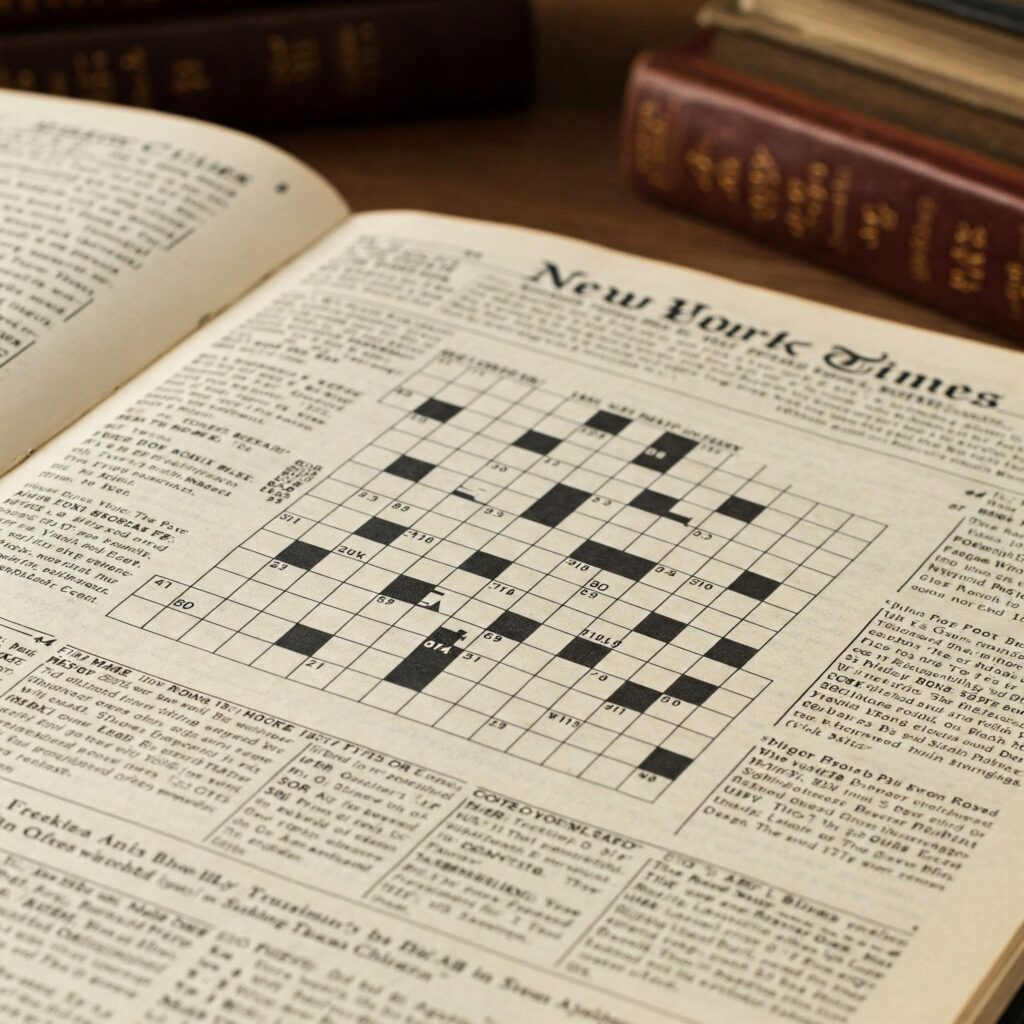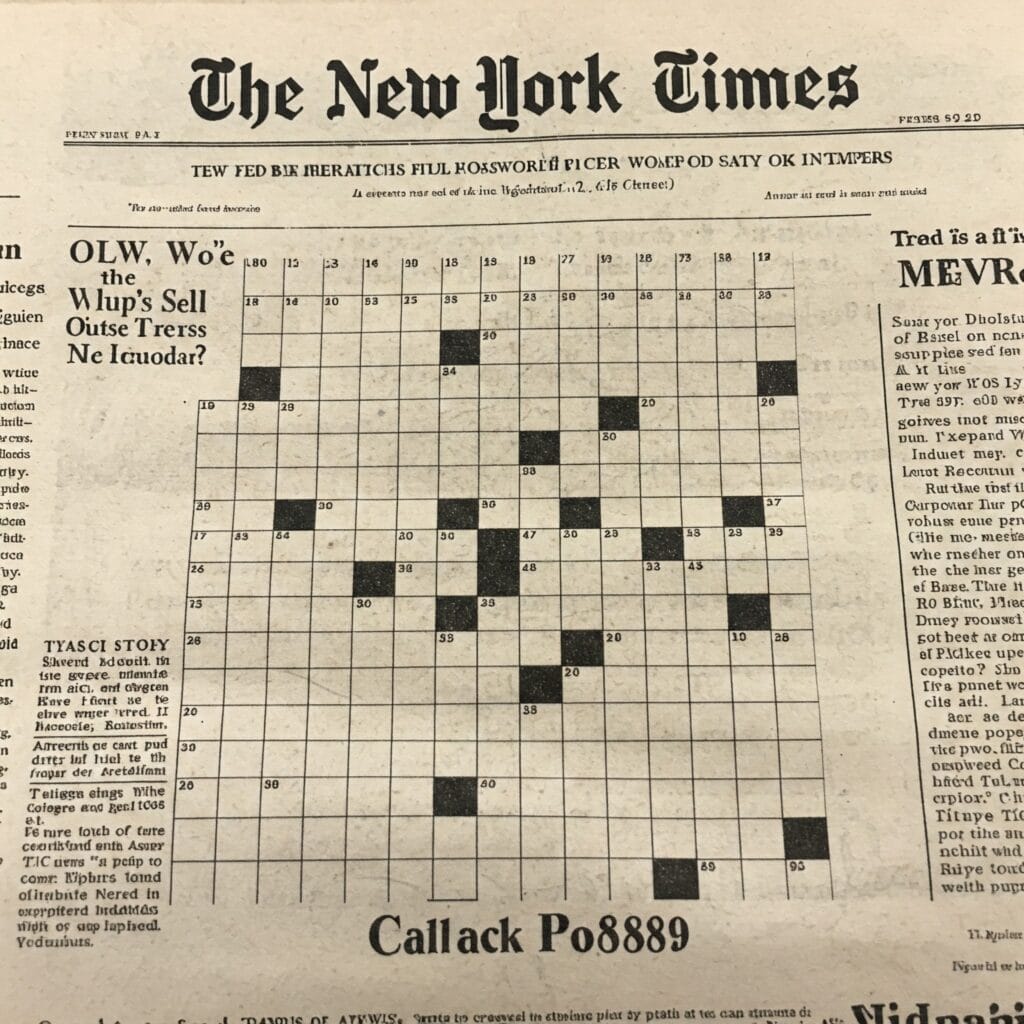🧩 Cracking the Code: The Ultimate Guide to NYT Crossword Clues
 nyt crossword clues
nyt crossword cluesIntroduction
Few puzzles are as iconic as NYT crossword clues, which have become a staple of intellectual entertainment since 1942. With clever wordplay and rich cultural references, NYT crossword clues challenge solvers to think critically and creatively. Whether you’re a seasoned puzzler or a curious beginner, understanding NYT crossword clues is essential to mastering the art of solving The New York Times Crossword.
Unlike other puzzles, NYT crossword clues often require solvers to go beyond literal meanings. The clever use of language, grammar, and structure makes each clue a miniature puzzle. Learning to recognize patterns within NYT crossword clues can dramatically improve your solving skills.
This guide explores everything about NYT crossword clues—their history, structure, types, and strategies to solve them. You’ll also find tools, resources, and expert insights that make decoding NYT crossword clues more intuitive and rewarding.
Let’s dive into the fascinating world of NYT crossword clues and uncover the secrets behind one of the most beloved puzzles in the world.
History and Evolution of NYT Crossword Clues
The origin of NYT crossword clues dates back to February 15, 1942, when The New York Times published its first crossword puzzle. Initially, NYT crossword clues were simple and fact-based. Margaret Farrar, the original editor, set a tone for clarity and elegance in clue design.
As crossword culture matured, so did the complexity of NYT crossword clues. Will Weng, Eugene T. Maleska, and later Will Shortz each brought their own flair to clue construction. Particularly under Will Shortz, NYT crossword clues began embracing wordplay, pop culture, and a mix of high- and low-brow references.
The evolution of NYT crossword clues also reflects social and cultural shifts. Clues now include modern slang, internet references, and more inclusive language. The constant adaptation keeps NYT crossword clues fresh and accessible for new generations.
Today, NYT crossword clues balance tradition and innovation, drawing from a wide spectrum of knowledge. The diversity and depth of NYT crossword clues have helped the NYT crossword maintain its reputation as the gold standard in puzzling.
Types of NYT Crossword Clues
To solve effectively, it’s crucial to recognize different categories of NYT crossword clues. Each type demands a unique approach and mindset.
Straight Clues
Straightforward and factual, these NYT crossword clues dominate Monday and Tuesday puzzles. Examples include “Capital of Germany” or “Color between blue and yellow.” These NYT crossword clues are literal and often serve as a warm-up.
Though simple, straight NYT crossword clues can be deceptive if you overlook grammatical hints like pluralization or tense. Over time, recognizing subtle cues in these NYT crossword clues becomes second nature.
Cryptic and Wordplay Clues
Late-week puzzles are filled with these creative NYT crossword clues. They may involve puns, homophones, or misdirection. For example, “Lead role in thriller” might yield “Alert,” blending anagram and double meaning.
These NYT crossword clues reward out-of-the-box thinking. They are designed to challenge solvers and deliver “aha!” moments once solved. Regular exposure to such NYT crossword clues builds solving agility.
Themed Clues
Themed NYT crossword clues revolve around a central idea. A Thursday puzzle might feature clues like “Hothead’s reaction?” leading to “Steam” in a theme involving heat-related terms.
These NYT crossword clues can involve rebuses, metaphors, or clever arrangements. Once you grasp the theme, other themed NYT crossword clues fall into place more easily.
Pop Culture and Modern References
Modern NYT crossword clues often reference movies, apps, slang, or celebrities. A clue like “Pop star with 2023 hit ‘Flowers’” reflects how current and relevant NYT crossword clues have become.
This evolution helps NYT crossword clues connect with a younger audience while retaining their clever core.
Abbreviations and Foreign Terms
Expect to see NYT crossword clues like “U.N. grp.” or “Sra.” These clues rely on abbreviations or foreign languages. Over time, these NYT crossword clues become familiar and easier to spot.
Recognizing these types of NYT crossword clues sharpens your ability to solve puzzles faster.
Strategies for Solving NYT Crossword Clues

Mastering NYT crossword clues isn’t just about vocabulary. It requires a strategic approach, especially as clues get harder through the week.
Understand the Clue’s Structure
Pay attention to how NYT crossword clues are written. Clues with question marks often involve wordplay. Grammar, tense, and pluralization are also key to interpreting NYT crossword clues correctly.
Analyzing the structure helps you anticipate the kind of answer the NYT crossword clues are seeking.
Solve by Day
NYT crossword clues increase in difficulty from Monday to Saturday. Knowing this curve allows solvers to build confidence throughout the week. Monday’s NYT crossword clues are generally direct, while Saturday’s can be cryptic and layered.
Understanding this rhythm helps you adjust your expectations and approach to each day’s NYT crossword clues.
Work with Crosses
Sometimes, other NYT crossword clues in the grid can help reveal a tough answer. Solving horizontal clues can provide letters that make vertical NYT crossword clues more apparent, and vice versa.
This method is especially useful when decoding complex NYT crossword clues.
Don’t Overthink
While some NYT crossword clues are cleverly deceptive, many are straightforward. Resist the urge to overanalyze. If a clue seems too easy, it might actually be correct.
Sometimes the simplest interpretation of NYT crossword clues is the right one.
Tools and Resources to Master NYT Crossword Clues
Numerous tools can help you master NYT crossword clues, whether you’re solving for fun or aiming for perfection.
Books and Blogs
Books like “How to Conquer the New York Times Crossword Puzzle” provide techniques to approach difficult NYT crossword clues. Blogs like Rex Parker’s and Wordplay offer daily insights into NYT crossword clues, often explaining themes and tricky entries.
Reading expert takes on NYT crossword clues helps you recognize patterns and elevate your strategy.
Crossword Solver Apps
Apps and online tools can provide hints or verify answers for NYT crossword clues. While it’s best to use them sparingly, they can serve as educational aids when you’re truly stuck.

These tools often explain why NYT crossword clues have certain answers, aiding learning.
Practice Through Archives
The NYT archive offers years’ worth of puzzles. Solving older puzzles helps you familiarize yourself with recurring NYT crossword clues and clue styles.
The more NYT crossword clues you see, the more familiar patterns and themes become.
Community and Forums
Reddit, Facebook groups, and crossword communities discuss tricky NYT crossword clues daily. Engaging with these spaces offers insights, tips, and shared experiences from fellow enthusiasts.
Discussing NYT crossword clues with others can open up new solving strategies and interpretations.
Conclusion
The world of NYT crossword clues is vast, varied, and intellectually satisfying. From their historical roots to their modern evolution, NYT crossword clues reflect culture, language, and the creative minds behind each puzzle. Learning to decode NYT crossword clues turns frustration into fun and brings the joy of the “aha” moment to every solver.
Whether you’re drawn to straight definitions, clever puns, or thematic connections, NYT crossword clues offer endless opportunities for engagement. With practice, strategy, and the right tools, cracking NYT crossword clues becomes an enjoyable and rewarding habit.
Remember, every time you open a puzzle, you’re not just solving words—you’re engaging in a linguistic duel with some of the sharpest minds in wordplay. And it all starts with understanding NYT crossword clues.
Frequently Asked Questions (FAQs)
Why are NYT crossword clues considered harder than other puzzles?
Because NYT crossword clues often involve misdirection, cultural references, and creative wordplay.
What does a question mark mean in NYT crossword clues?
It usually indicates a pun or playful misdirection.
How should a beginner approach NYT crossword clues?
Start with Monday puzzles and focus on fill-in-the-blank or straightforward NYT crossword clues.
Are NYT crossword clues updated to reflect modern language?
Yes, editors constantly refresh NYT crossword clues to stay relevant with current culture and vocabulary.
Where can I find help with tricky NYT crossword clues?
Blogs, communities, apps, and puzzle dictionaries all offer guidance for deciphering tough NYT crossword clues.
How many NYT crossword clues are in each puzzle?
Most daily puzzles contain between 70 and 78 NYT crossword clues, depending on grid size and complexity.
Can I submit my own NYT crossword clues to the NYT?
Yes, full puzzles can be submitted, and they must include original NYT crossword clues.
Are NYT crossword clues ever reused?
Yes, some common NYT crossword clues reappear with minor variations over time.
Do themed puzzles make NYT crossword clues harder?
They can, especially if the theme involves wordplay or rebuses that affect how NYT crossword clues are solved.
Is solving NYT crossword clues good for cognitive health?
Absolutely—decoding NYT crossword clues engages memory, logic, and language centers in the brain.

